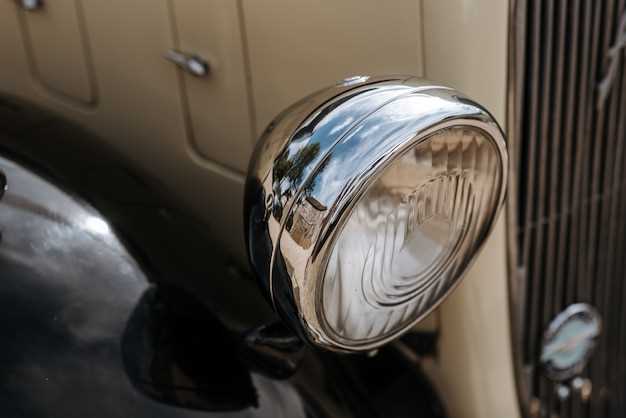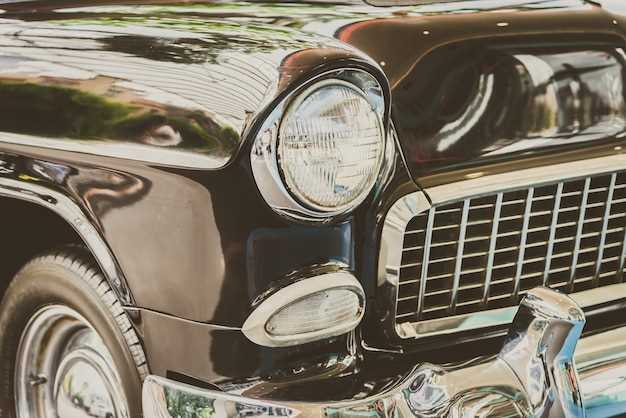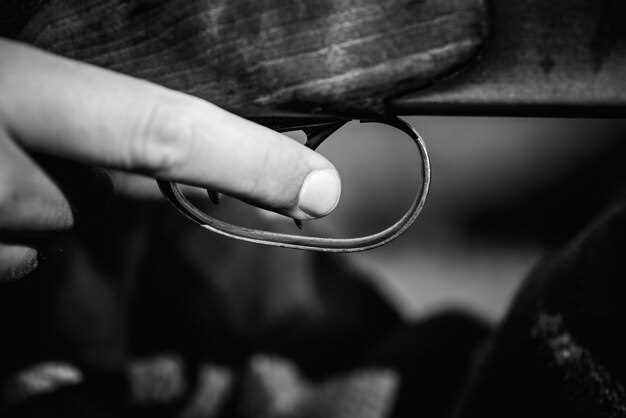
Restoring a classic car is not just a hobby; it’s a passion that connects enthusiasts with the rich history of automotive craftsmanship. Achieving a successful restoration goes beyond simply making an old vehicle operational again; it involves a deep commitment to preserving its authenticity. This article explores the essential principles that guide classic car restorers in their quest to maintain the vehicle’s original character while enhancing its performance and reliability.
At the core of every restoration project lies the challenge of balancing modern technology with traditional techniques. To truly honor the vehicle’s legacy, restorers must pay close attention to detail, ensuring that every component reflects the car’s original design and functionality. This endeavor requires a comprehensive understanding of the vehicle’s history, its manufacturing processes, and the unique components that define its identity.
By focusing on preserving authenticity, restorers can avoid the pitfalls of over-restoration–a common mistake where the vehicle is altered to the point of losing its historical significance. Whether it is sourcing original parts or replicating components to match factory specifications, the goal remains the same: to create a classic car that is both reliable and true to its roots. In the following sections, we will delve into effective strategies and best practices for ensuring an authentic restoration process.
Choosing Original Parts vs. Aftermarket Alternatives
When restoring a classic car, the choice between original parts and aftermarket alternatives is crucial to maintaining authenticity. Original parts, often sourced from manufacturers or salvage yards, ensure that the vehicle retains its original specifications and characteristics. These components not only enhance the car’s value but also contribute to the overall authenticity of the restoration. Using original parts can be particularly important for collectors and enthusiasts who prioritize historical accuracy in their vehicles.
On the other hand, aftermarket alternatives can offer benefits such as cost savings and increased availability. Many aftermarket parts are designed to improve performance or reliability, which can enhance the driving experience. However, opting for these alternatives may compromise the vehicle’s authenticity, especially if the parts do not match the original design or materials used in the car’s production. For purists, the use of aftermarket components can detract from the vehicle’s historical significance.
Ultimately, the decision should be based on the goals of the restoration. If the aim is to achieve a show-quality restoration that reflects the car’s original state, then original parts are the best choice. However, if the project focuses more on driving enjoyment and daily usability, aftermarket parts might be considered as a reasonable compromise. Careful evaluation of the impact on authenticity is essential in making this decision, ensuring that the restored classic embodies the spirit and history of its lineage.
Documenting the Restoration Process for Future Value

Meticulously documenting the restoration process of your classic car is essential for maintaining authenticity and maximizing its future value. Every step taken during the restoration should be recorded, including photographs, receipts, and detailed notes outlining the work completed. This documentation not only serves as a historical record but also provides potential buyers with confidence in the integrity of the restoration work.
Start by creating a dedicated restoration log that chronicles each phase of the project. Note the original condition of the vehicle and the specific areas requiring attention. Capture images of the car before any work begins to highlight the transformation that follows. As you progress, take photographs at different stages–a stripped chassis, the painting process, and the final assembly–demonstrating the authenticity of the restoration efforts.
Include copies of all invoices and receipts for parts and services used in the restoration. These documents not only validate the authenticity of the components but also showcase the investment made in quality resources. Furthermore, if you utilized professional services, retaining correspondence and contracts can underline the commitment to restoring the car to its original glory.
Consider documenting your challenges and solutions during the restoration process. Detailing the obstacles overcome can further enhance the narrative of your project, adding depth to the story of the car. This extensive documentation creates a comprehensive account that not only illustrates your dedication but also serves as an educational reference for future restorers.
In summary, thorough documentation of your restoration process is vital for preserving authenticity and enhancing future market value. By keeping a detailed record, you not only honor the heritage of your classic car but also empower its legacy for years to come.
Understanding Manufacturer Specifications and Original Features

Maintaining authenticity in classic car restoration requires a deep understanding of the manufacturer’s specifications and original features. This knowledge is essential to preserving the car’s identity and enhancing its value. Manufacturer specifications include vital details such as engine type, transmission options, paint colors, and interior materials. Adhering to these specifications helps ensure that your restoration aligns with the original vision set forth by the car’s designers.
Original features play a significant role in determining a classic car’s authenticity. Items such as factory-installed equipment, specific trim levels, and unique identifiers like engine numbers provide crucial context. It is essential to research and document these elements before beginning the restoration process. Consulting original manuals, brochures, and even reaching out to car enthusiast communities can provide insights into the specific details that make your classic car unique.
Any alterations from the original specifications can diminish the authenticity of the restoration. For example, swapping a non-original engine or using aftermarket body panels can significantly impact the vehicle’s historical value. Therefore, sourcing OEM (Original Equipment Manufacturer) parts is highly recommended for restoring your classic car to its former glory.
In conclusion, understanding manufacturer specifications and original features is paramount for achieving authenticity in restoration. Thorough research and careful attention to detail will ensure that your project not only honors the car’s legacy but also preserves its intrinsic value for future generations.

